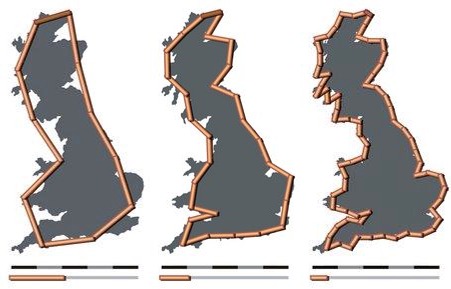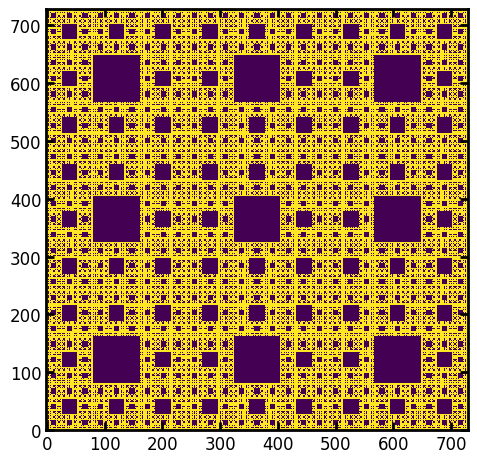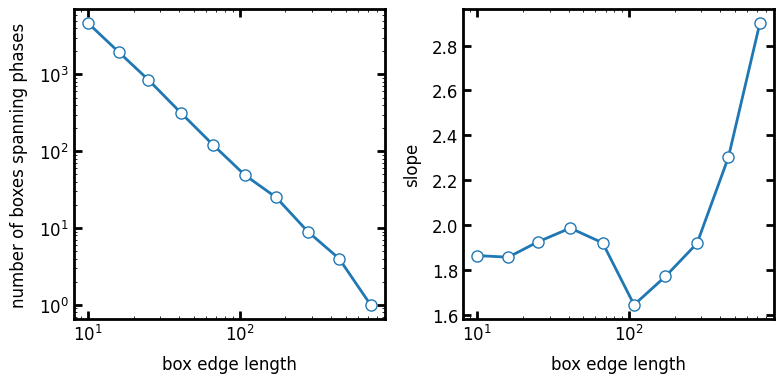Measuring fractal dimension by box-counting#
Theory#
The term fractal dimension was introduced by Benoit Mandelbrot in 1967 to explain self-similarity of a pattern. A fractal dimension is defined as a ratio of the change in detail to the change in scale. It is used as an index that quantifies the complexity of a fractal pattern.
Famously, fractal dimensions have been used to analyze the length of the British coastline. A coastline’s measured length is observed to change depending on the length of the measuring stick used. In 2-D and 3-D, this notion can be extended to the length of a measuring pixel or voxel, respectively.

Box Counting Method#
One way to determine fractal dimension of an image is the box counting method. Boxes of various sizes are laid over the image in a fixed grid pattern. The number of boxes that span the edge of the pattern (i.e. partially 1 and partially 0) are tallied as a function of box size. This count is then used to calculate the fractal dimension .
Mathematical Definition#
The relationship of a pattern’s fractal dimension and its measuring element can be expressed as:
where:
N: number of boxes of side D that span an edge
D: size of the boxes
F: fractal dimension
Example#
A Sierpinski carpet has a known fractal dimension of 1.8928. Performing the box counting method found its fractal dimension as approximately 1.8 ~ 1.9.
First, import the needed packages.
import matplotlib.pyplot as plt
import porespy as ps
ps.visualization.set_mpl_style()
Generate a sierpinski carpet and visualize.
im = ps.generators.sierpinski_foam([3**6, 3**6], n=5, mode=None)
plt.imshow(im);

Finally, apply the box count function and visualize.
data = ps.metrics.boxcount(im)
fig, (ax1, ax2) = plt.subplots(1, 2, figsize=(8, 4))
ax1.set_yscale("log")
ax1.set_xscale("log")
ax1.set_xlabel("box edge length")
ax1.set_ylabel("number of boxes spanning phases")
ax2.set_xlabel("box edge length")
ax2.set_ylabel("slope")
ax2.set_xscale("log")
ax1.plot(data.size, data.count, "-o")
ax2.plot(data.size, data.slope, "-o");

The horizontal portion of the slope vs box edge length curve, between \(10^1\) and \(10^2\) is a flat line with a value of approximately 1.9. Beyond a box edge length of \(10^2\) the analysis becomes impacted by the finite image size so the result begins to diverge.
